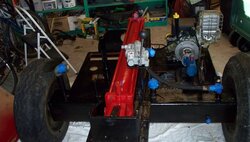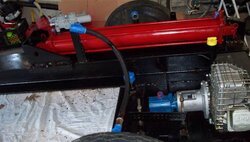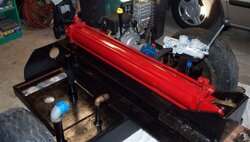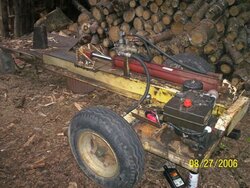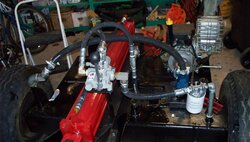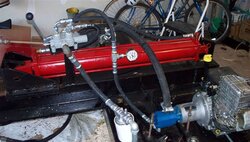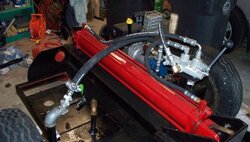DO NOT put the filter on the intake line to the pump
(Unless you really like purchasing new pumps...)
The ONLY thing that should be between the tank and the pump is possibly a fairly coarse filter screen, and many hydraulic people would even object to that. You want as straight and short a path from the tank to the pump input as you can manage, with minimal restrictions - NO fitting should be smaller than the pump inlet. Ideally the pump should be lower than the tank fluid level, but this isn't always possible, however you should at least attempt to minimize the suction head.
The reason is you want to make sure the pump suction side doesn't cavitate, and in effect make the pump run dry - this will rapidly ruin the pump. To avoid it, you want to make sure that there is no restriction in the suction line.
The filter should be in the low pressure RETURN line that goes from the valve back to the tank. Make sure you plumb it so the flow goes in the proper direction (it should have a flow arrow on the housing). It is probably best to put the filter so that it goes directly into the tank, preferably below the full line (reduces air bubbles in the fluid) and then attach the return hose to the filter as this minimizes the number of fittings needed.
Otherwise, your hoses need to be long enough to go from point to point without straining or excessively tight bends. If the splitter tilts, make sure the hoses work in both positions, and going from one to the other. Avoid twists in the hoses. Try to keep them as short as you can while meeting the other guides - make them as long as they need to be, but no longer...
Remember, the high pressure side - pump to valve, valve to cylinder (both sides) need to use high pressure rated hoses and fittings (3,000 PSI minimum working pressure, NO Schedule 40 plumbing fittings, no hose clamps, etc.) The low pressure side - valve to tank, tank to pump, can use any suitable oil resistant hose, and it is OK to use plumbing fittings, hose clamps and so on.
The valve needs to be solidly mounted - not just screwed into ONE of the cylinder ports - it is OK to have it screwed into one port and run a RIGID metal line to the other port, as this gives two solid points so that it can't turn. If not, you should make some sort of hold down bracket. Otherwise the constant cycling of the valve will cause it to loosen up and leak.
Hope this helps...
Good job on the rebuild job so far, looks good. (BTW, you mentioned a new pump and valve, looks like a new engine as well???)
Gooserider


